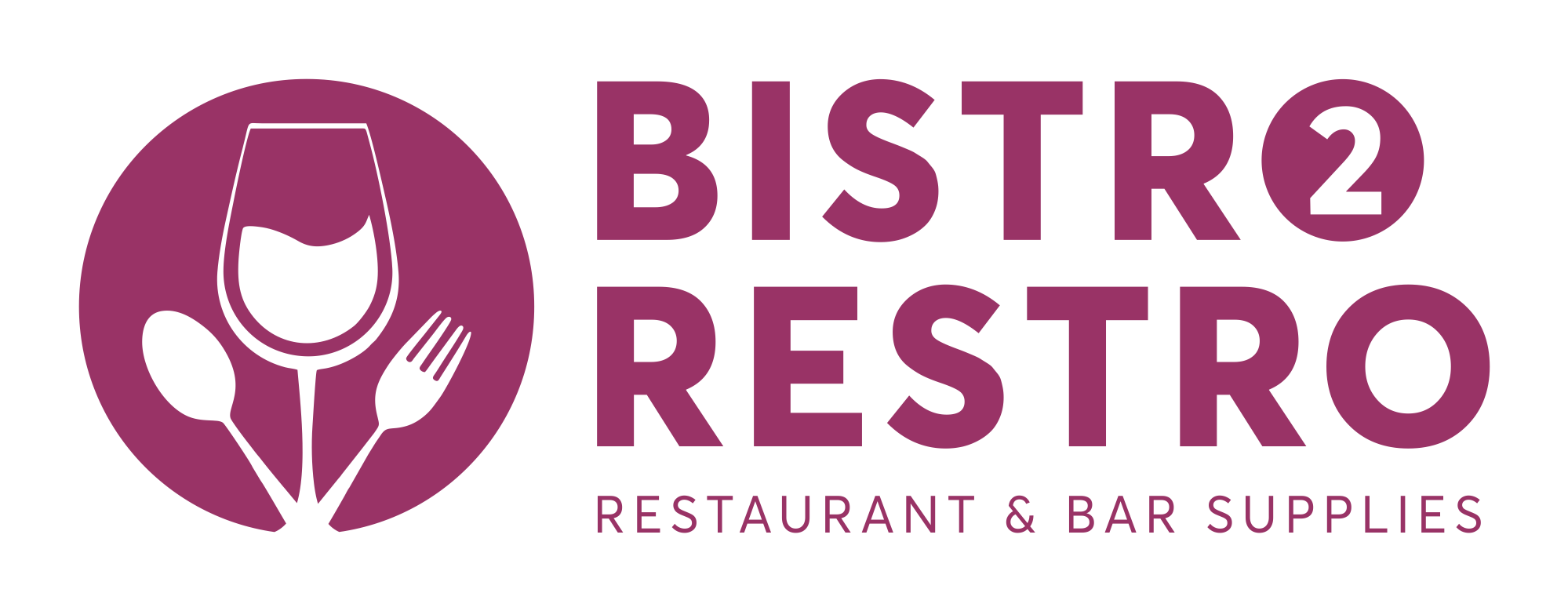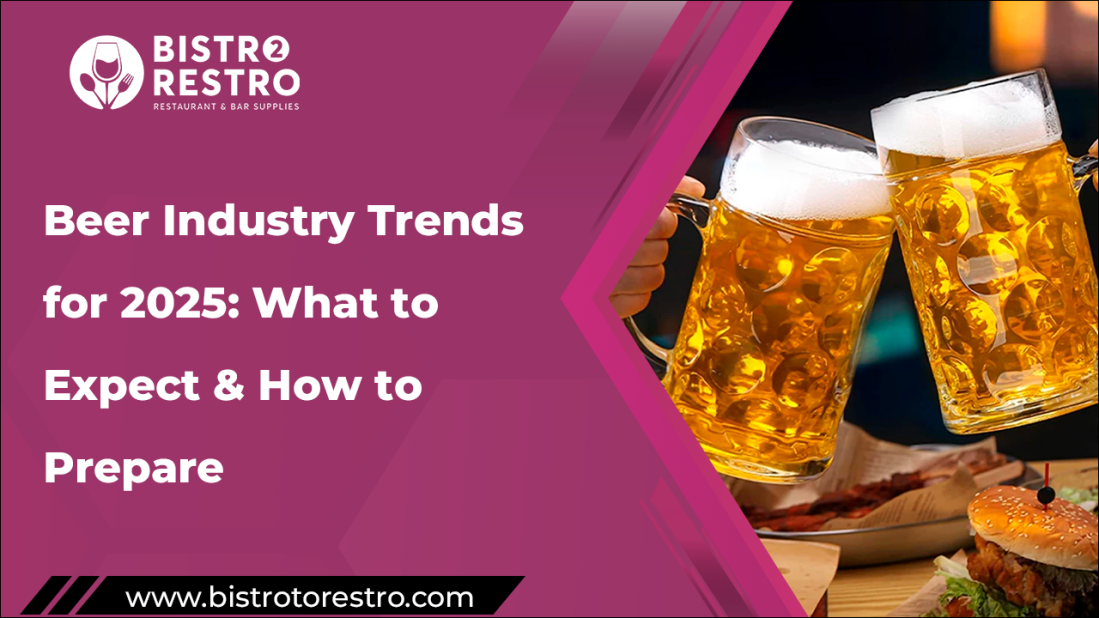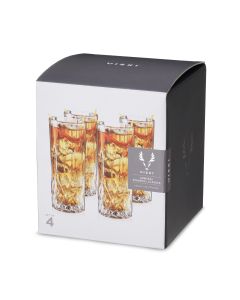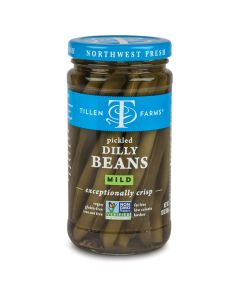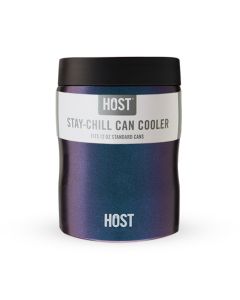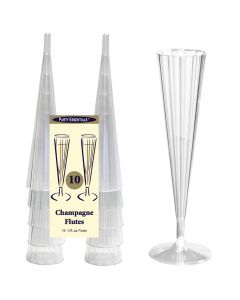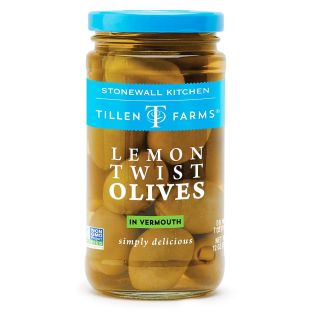The beer industry has been through a dramatic change in the last decade due to shifting consumer trends, technology, and the global economy. When we fast forward to 2025, it can be seen that these forces will further transform the beer industry in terms of production, marketing and consumption. For industry professionals, it is crucial to be aware of these trends in order to remain relevant and meet the new challenges of the constantly changing market. As part of this transformation, the demand for beer accessories will also increase, with businesses looking for high-quality tools to enhance their service.
This blog aims at identifying the major trends in the beer industry that are likely to occur in the year 2025 and the strategies that firms can employ in order to adapt to these changes.
Sustainability Takes Center Stage: A Green Revolution
Sustainability is no longer a mere concept; it is a factor that is taken into consideration when making a purchase or manufacturing a product. Sustainability will be a major issue in 2025 for breweries as the pressure to minimize their impact on the environment increases. As breweries continue to innovate, Floating Bars and other beverage-related businesses will also be expected to embrace sustainable practices.
Water Conservation: The process of brewing is a process that requires a lot of water. Breweries are currently being forced to reduce water consumption through recycling and the use of water efficient technologies.
Carbon Footprint Reduction: There is a lot of carbon emission that is associated with beer production and its transportation. Most breweries are now embracing the use of renewable energy, energy efficient technologies and means of transport to minimize their impact on the environment.
Packaging Innovations: Since plastic waste is a problem all over the world, breweries are shifting to using environmentally friendly containers such as recyclable cans, glass bottles, and biodegradable materials.
How to Prepare
In order to avoid being left behind, breweries should start adopting sustainable practices in the market today. Some effective strategies include:
Water recycling programs.
The shift from fossil fuel based energy sources to renewable energy sources.
Considering new packaging options such as aluminum cans and environmentally friendly labels.
Reporting sustainability initiatives in marketing, as customers become more conscious of the environment and its protection.
Non-Alcoholic and Low-Alcohol Beers: The Rise of Healthy Choices
The trend of health-consciousness among the consumers will drive the consumption of non-alcoholic and low alcohol beers in 2025. These drinks are suitable for anyone who wants to cut down their alcohol consumption for health purposes, those who want a low alcohol beer and those who do not want to have a hangover at all.
Non-Alcoholic Beers: These beers have evolved in the market in terms of taste and the number of brands available in the market. There will be more craft breweries that will try to come up with new flavors, new ingredients and new brewing methods to come up with new non alcoholic beers.
Low-Alcohol Beers: Moderate beers, those with an ABV of between 0.5% and 4% are also a good middle ground between taste and temperance. These beers are for those people who would like to enjoy the taste of beer but not the full impact of alcohol.
How to Prepare
It is recommended that breweries expand their portfolios to include more non-alcohol and low alcohol beers. Key steps include:
Innovating on the brewing process in order to create tasty non-alcohol beers.
Extending the alcohol by volume of well-known beer types.
Promoting these options to the target market of the health conscious and those who wish to drink in moderation.
Also read on: Thirst for Change: Revolutionizing the Beverage World for 2025
Craft Beer Evolution: Niche and Hyper-Local Styles
Craft beer will continue to thrive in 2025, but the market is evolving. While large-scale craft breweries have made their mark, the next big thing will be hyper-local, small-batch beers that cater to niche consumer tastes. Consumers will be increasingly interested in beers made with local ingredients and those that reflect regional flavors.
Hyper-Local Sourcing: As consumers demand more transparency in sourcing and ingredient quality, breweries will capitalize on local agriculture, creating beers with unique regional flavors.
Niche Styles and Ingredients: Expect a surge in experimental brews with rare ingredients or innovative brewing methods. Wild ales, sour beers, and hybrid styles will gain even more traction.
How to Prepare
Brewery owners should focus on creating innovative, locally inspired beers that appeal to their community. This may involve:
Building partnerships with local farms for unique ingredients.
Experimenting with new styles, hybrids, or experimental fermentation techniques.
Engaging with local consumers through events, tasting sessions, and collaborations to build strong brand loyalty.
Looking to upgrade your bar or restaurant's beverage service with the best beer and liquor accessories? BistroToRestro has you covered with a wide range of high-quality products designed for both functionality and style. From beer taps and dispensers to elegant glassware and cocktail shakers, we provide everything you need to enhance your service. Our collection also includes wine chillers, pour spouts, bottle openers, and draft systems, ensuring your establishment is fully equipped for success.
Technology Integration: Digital Brewers and AI-Enhanced Brewing
In 2025, technology will play a crucial role in improving production efficiency, enhancing flavor profiles, and personalizing consumer experiences. The integration of artificial intelligence (AI), automation, and the Internet of Things (IoT) will revolutionize how beer is brewed, distributed, and sold.
AI and Data Analytics: AI will be used for predictive analytics to anticipate trends and optimize brewing processes. Machine learning algorithms will analyze customer preferences, helping brewers develop targeted product offerings.
Automation: Robotic systems and automated production lines will streamline processes, reduce costs, and improve consistency.
IoT Integration: IoT-enabled sensors will monitor every stage of production, from fermentation to packaging, ensuring optimal conditions for beer quality.
How to Prepare
Breweries should invest in digital technologies to stay competitive:
Implement AI-powered tools to forecast trends and improve production decisions.
Integrate IoT sensors for real-time monitoring and process control.
Embrace automation for tasks such as packaging and inventory management to reduce labor costs and improve efficiency.
The Rise of Beer Cocktails and Hybrid Drinks
In 2025, expect beer to cross paths with the world of cocktails as brewers experiment with hybrid beverages that combine beer with spirits, juices, and other flavorings. Beer cocktails have been gaining popularity, and this trend will intensify as consumers look for novel drinking experiences.
Beer Cocktails: Beers like IPAs, lagers, and stouts are being mixed with spirits, herbs, and fruits to create refreshing and innovative drinks.
Beer-Infused Spirits: In addition to cocktails, breweries will begin experimenting with beer-infused spirits, combining the complexity of beer with the high alcohol content of spirits.
How to Prepare
Breweries should capitalize on the growing interest in hybrid drinks:
Create signature beer cocktails and feature them prominently in their marketing.
Explore collaborations with bartenders and mixologists to craft new beer-based drinks.
Invest in R&D for unique and innovative products that appeal to adventurous drinkers.
Check out Top 7 Cocktail Trends: Here’s What You’ll Be Sipping
E-commerce and Direct-to-Consumer (DTC) Sales Growth
As the convenience of online shopping continues to shape consumer behavior, beer companies will increase their focus on e-commerce and direct-to-consumer (DTC) sales. In 2025, more breweries will set up their own online platforms for direct sales, and more states will expand their alcohol delivery services to meet growing demand.
Subscription Services: Craft beer subscription boxes will continue to grow, providing customers with personalized monthly selections delivered right to their doorsteps.
Online Tastings: Virtual tastings and beer pairing experiences will become more common as breweries seek to engage with consumers remotely.
How to Prepare
Breweries should build an online presence and optimize their digital sales strategies:
Develop a user-friendly e-commerce platform for direct sales.
Implement subscription services for loyal customers.
Host virtual events such as tastings and behind-the-scenes brewery tours to strengthen customer relationships.
Diversity and Inclusion in the Beer Industry
Diversity and inclusion are increasingly important to consumers, and the beer industry is responding by striving for greater inclusivity. This includes promoting diverse representation within brewery staff, leadership, and marketing campaigns, as well as offering products that cater to a wide range of tastes and preferences.
Women in Brewing: The number of female brewers and owners is on the rise, and this trend will continue in 2025.
Inclusive Marketing: Breweries are moving towards more inclusive and diverse marketing campaigns that reflect the diverse range of beer drinkers.
Cultural Sensitivity: Brewmasters are incorporating global influences, such as ingredients and brewing techniques from different cultures, to create more inclusive and diverse beer styles.
How to Prepare
Breweries should embrace diversity and inclusivity within their operations and marketing:
Promote a diverse workforce and actively engage underrepresented groups in the brewing community.
Develop inclusive marketing campaigns that resonate with a broader audience.
Explore the use of culturally diverse ingredients and brewing techniques to appeal to global consumers.
As the beer industry looks toward 2025, a multitude of exciting trends are poised to transform the market. Sustainability, non-alcoholic options, craft beer evolution, technology integration, beer cocktails, and e-commerce growth will all play pivotal roles. By staying ahead of these trends and preparing for the future, breweries can position themselves for continued success in an ever-changing market.
The key to thriving in 2025 lies in adaptability—embracing new technologies, catering to evolving consumer preferences, and committing to sustainable, inclusive practices. The future of beer is rich with possibilities, and the companies that innovate today will be the ones leading the charge tomorrow.
FAQs
What is the beer trend in 2025?
In 2025, expect a focus on sustainability, non-alcoholic, and low-alcohol beers. Craft brews will become more localized, while beer cocktails and hybrid drinks will gain popularity.
What is the future of the beer market?
The beer market will continue to grow through digital sales and e-commerce platforms, with a rising demand for health-conscious, eco-friendly products. Automation and AI will streamline production.
What's going on in the beer industry?
The beer industry is shifting towards innovation, sustainability, and health-conscious options. Breweries are embracing new brewing techniques, niche styles, and direct-to-consumer sales.
What is the future of the craft beer industry?
The future of craft beer looks promising, with a trend towards hyper-local, niche brews, and unique flavors. Sustainability and diversity in brewing will continue to shape the sector.
